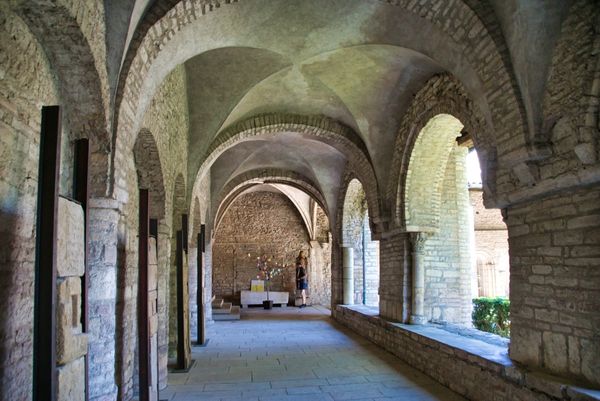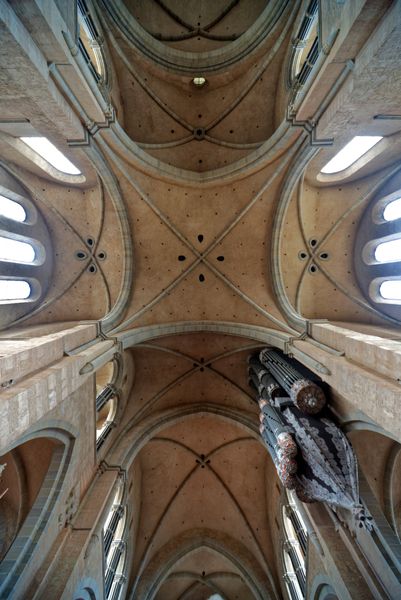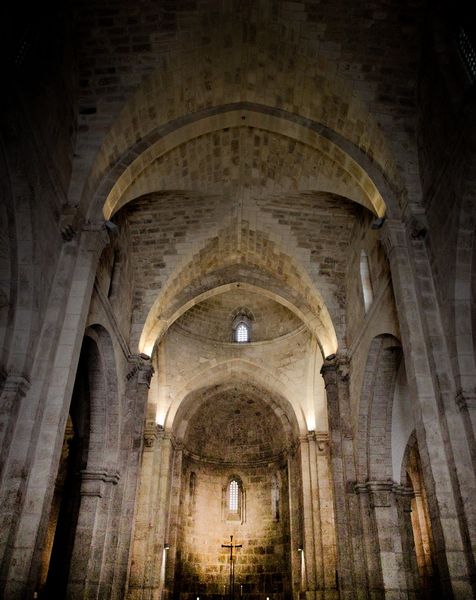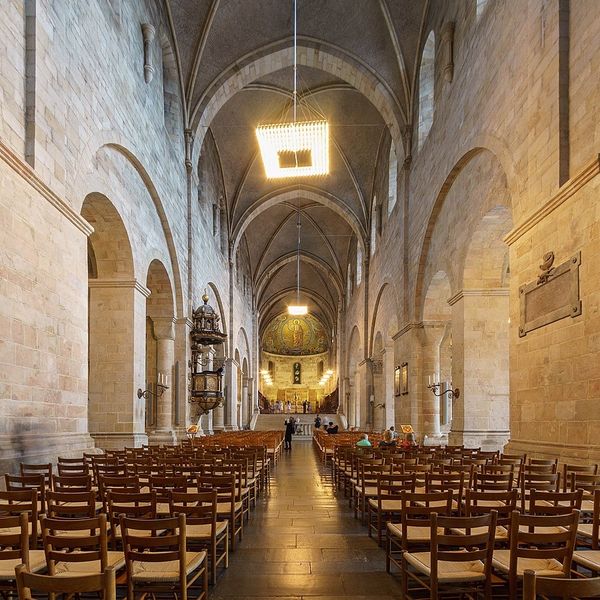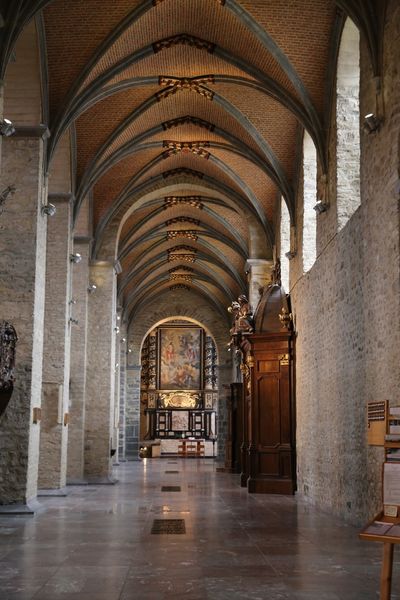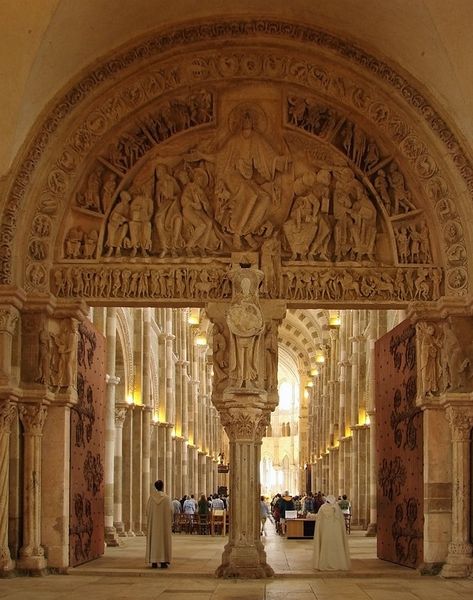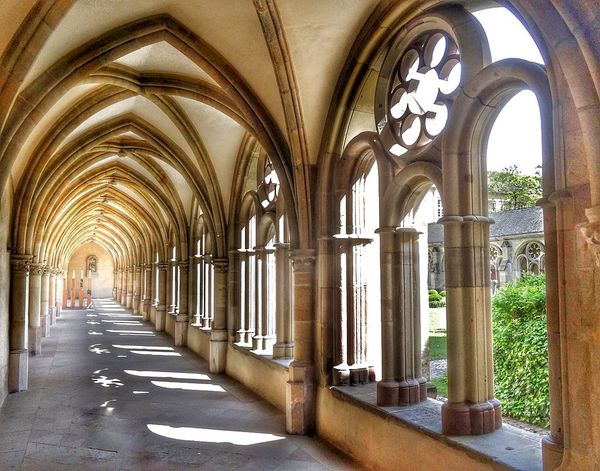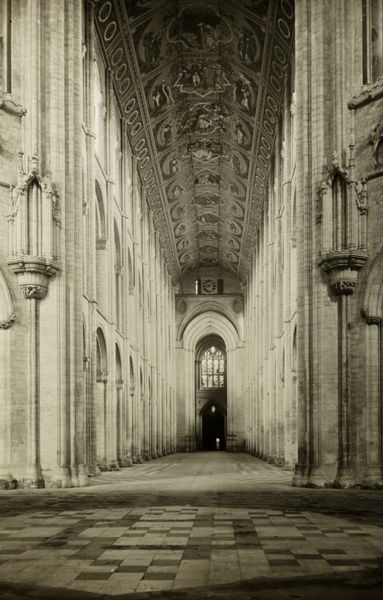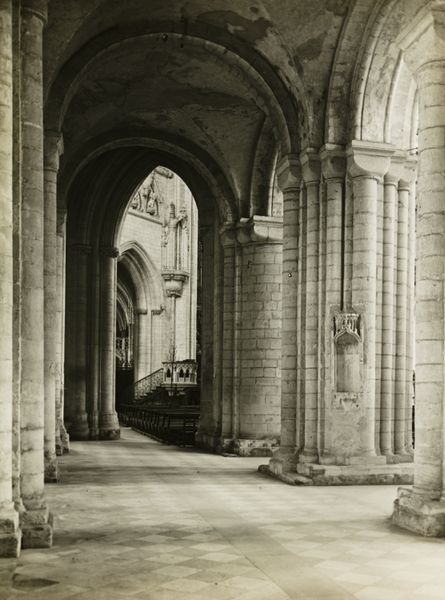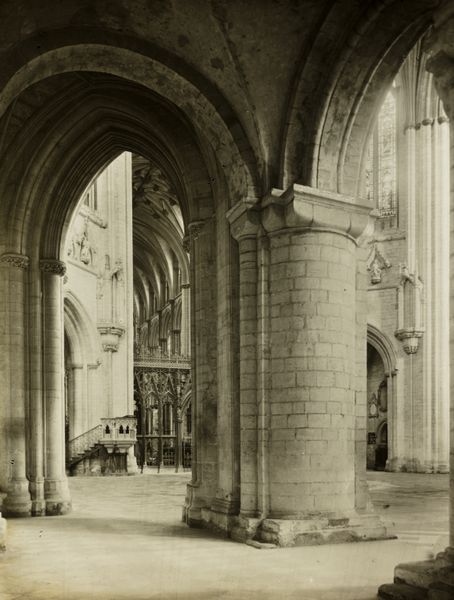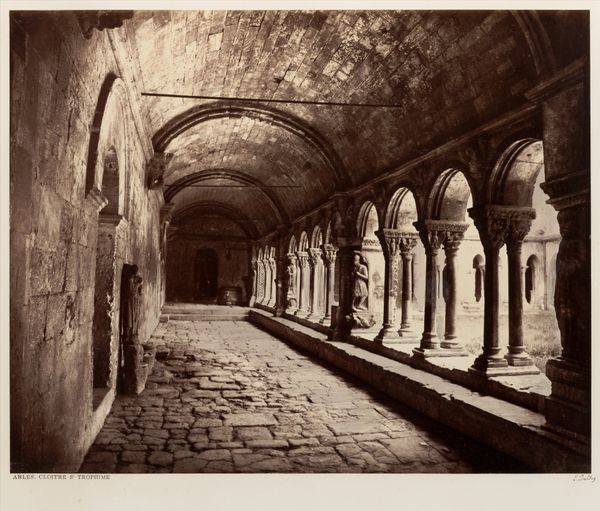
architecture
#
column
#
arch
#
architecture
Copyright: Public domain
Curator: Today, we are observing an image depicting the interior of Speyer Cathedral in Germany, a monumental architectural achievement dating back to 1030. Editor: My first impression? The weight. The sheer visual weight of those arches pressing down, yet also the upward drive of the columns. It feels both grounding and aspiring. Curator: Precisely! The cathedral’s construction began during the Salian dynasty, a period of significant political consolidation. The scale itself was a statement, designed to convey imperial power and divine mandate through imposing materiality. The labor…my God. Editor: Speaking of labor and materials, look closely at the sandstone. Its very existence required quarrying, transportation, and the skillful labor of stonemasons. Each column is meticulously crafted, not just functional but symbolic of immense human effort, of dedication. And the paint! What minerals make up the bands? Curator: Absolutely. The arches striped with alternating bands of color aren't merely decorative. This stylistic choice originates in earlier Islamic architecture—reflecting cross-cultural influences present within the Holy Roman Empire. These materials were costly. This construction represents wealth and resources extracted and employed toward solidifying power, which in turn affected race and class in unimaginable ways. Editor: How did the people building these columns view their place within the structures? They may have wanted security and to make something great for God. The arches visually demonstrate how structures come together. Curator: Undoubtedly, the construction of this cathedral occurred during a tumultuous period characterized by widespread poverty, rigid social hierarchies, and limited opportunities. It can serve as a poignant reminder of how material objects embody these layered contexts. Editor: Examining architectural spaces such as this invites us to confront questions of labor, power, and representation, allowing us to develop critical understandings. Curator: Seeing the effort and material come together makes me feel a great amount of humanity present. Editor: The material and cultural threads woven into a single building make a monument stand out, even after centuries have passed.
Comments
No comments
Be the first to comment and join the conversation on the ultimate creative platform.
